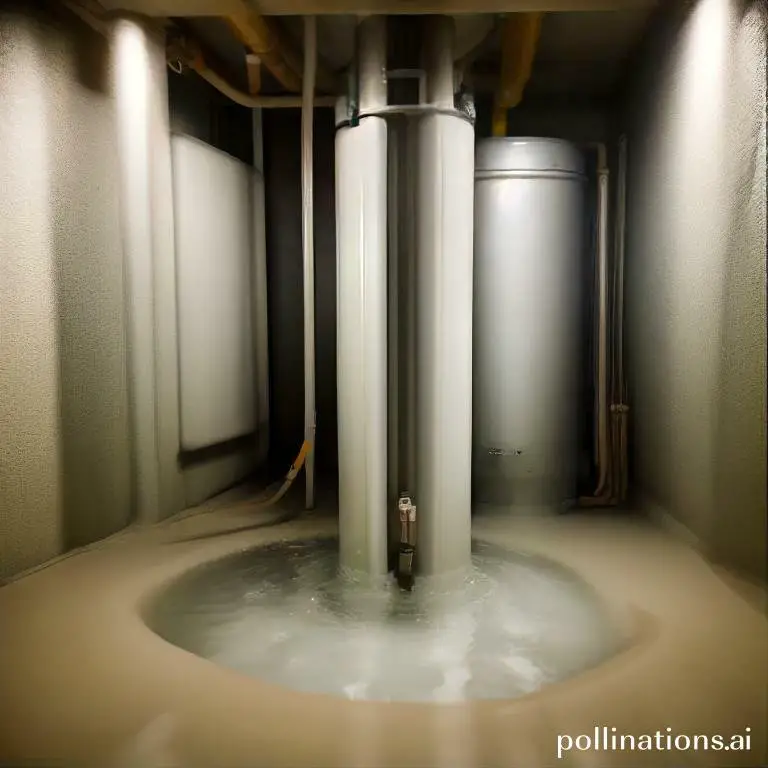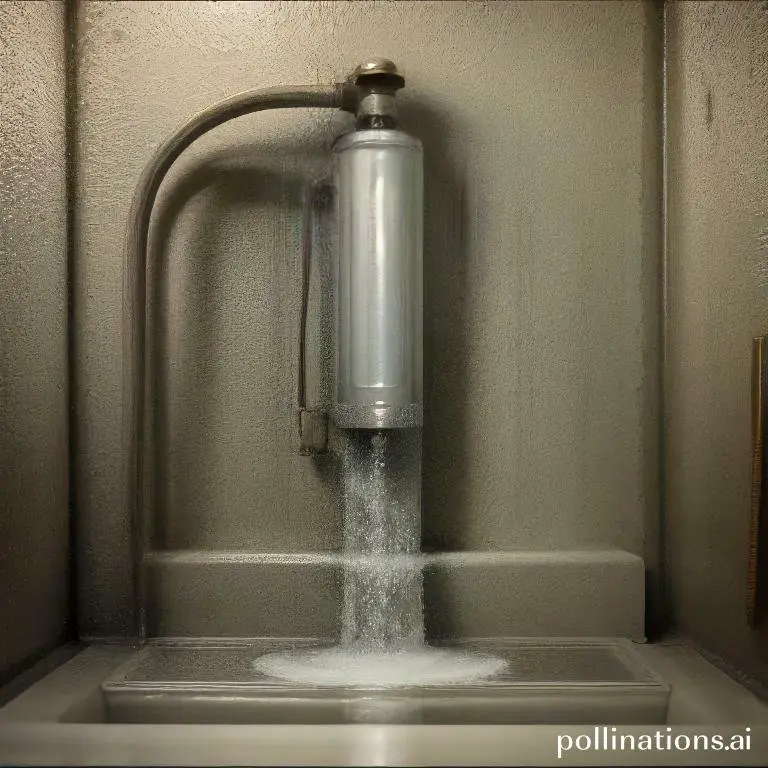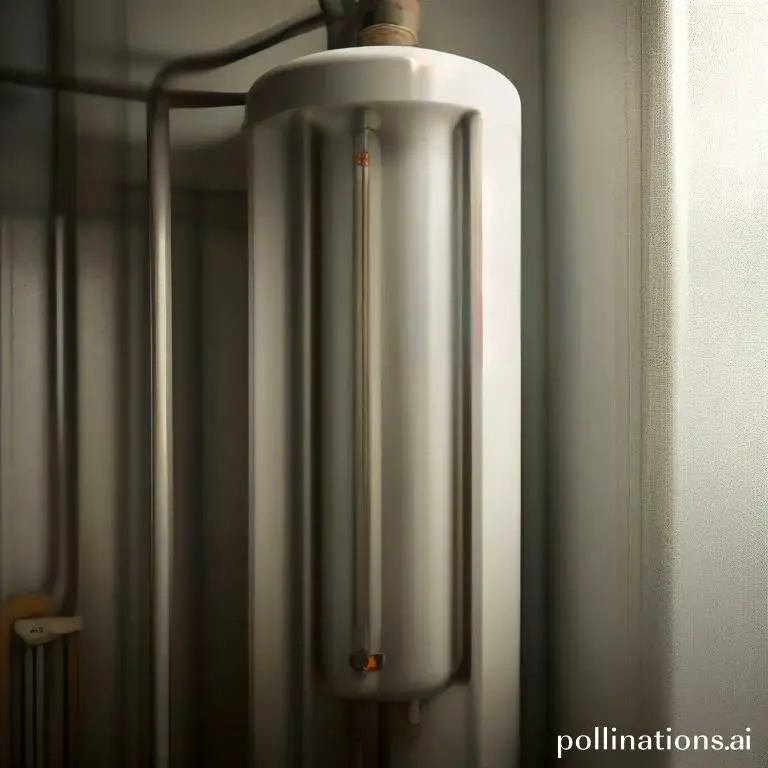
II. The best time of the year to flush a water heater is during the fall or winter months when the heater is used more frequently and sediment buildup is more likely to occur.
III. It is important to follow proper safety procedures when flushing a water heater, such as turning off the power and gas supply, allowing the water to cool, and using caution when draining the tank.
The best time of the year to flush a water heater is during the fall season. As the weather starts to cool down, essential to ensure that your water heater is functioning optimally.
Flushing your water heater removes sediment and mineral buildup, improving its efficiency and extending its lifespan. By flushing your water heater in the fall, you can ensure that it is ready to provide you with hot water throughout the winter months.
Regular maintenance of your water heater is essential to keep it running smoothly and to avoid any unexpected issues.
Why Flushing a Water Heater is Essential
Flushing a water heater is an essential maintenance task that can significantly prolong the lifespan of the appliance. Over time, sediment buildup can occur in the water heater, which can negatively impact its functionality. This sediment, consisting of minerals, dirt, and other particles, settles at the bottom of the tank and forms a thick layer. When this layer becomes too thick, it can reduce the heating efficiency of the water heater and even cause it to overheat.
Prolongs the Lifespan of the Water Heater
Regularly flushing the water heater helps remove the sediment buildup, allowing the appliance to function optimally. By preventing the accumulation of sediment, you can prevent the formation of rust, corrosion, and other damage that can significantly shorten the lifespan of the water heater. Flushing the water heater at least once a year is recommended to maintain its efficiency and extend its lifespan.
Improves Water Quality and Efficiency
Sediment buildup in the water heater can also affect the quality of the water that comes out of your taps. As the sediment mixes with the water, it can lead to a decrease in water quality, resulting in unpleasant tastes and odors. Flushing the water heater helps remove these contaminants, improving the overall water quality in your home.
In addition to improving water quality, flushing the water heater also enhances its efficiency. When sediment accumulates in the tank, it acts as an insulator, making it harder for the heating elements to warm the water. This can lead to increased energy consumption and higher utility bills. Flushing the water heater regularly ensures that it operates at peak efficiency, saving you money in the long run.
| Benefits of Flushing a Water Heater: |
|---|
| Prolongs the lifespan of the water heater |
| Demonstration of how sediment buildup affects the heater’s functionality |
| Importance of regular maintenance |
| Improves water quality and efficiency |
| How sediment buildup affects water quality |
| How flushing improves efficiency |
Signs that your water heater needs flushing
Is your water heater not performing as efficiently as it used to? It might be time to consider flushing it. Flushing your water heater regularly can help maintain its performance and extend its lifespan. In this section, we will discuss the signs that indicate your water heater needs flushing.
1. Rusty water
One of the most common signs that your water heater needs flushing is if you notice rusty water coming out of your taps. This could be an indication that there is sediment buildup in your water heater tank. Flushing the tank will help remove the sediments and prevent further rusting.
2. Strange noises
If you hear strange noises coming from your water heater, such as popping or rumbling sounds, it could be a sign that there is sediment buildup inside the tank. Flushing the tank will help remove the sediments and eliminate the noises, ensuring your water heater operates quietly.
3. Reduced hot water supply
Are you experiencing a reduced hot water supply in your home? This could be due to sediment buildup in your water heater tank. Flushing the tank will help remove the sediments, allowing for better water flow and ensuring an adequate supply of hot water in your household.
Regularly flushing your water heater can help prevent these issues and ensure its optimal performance. If you notice any of these signs, it is recommended to consult a professional plumber who can assist you in flushing your water heater and resolving any underlying problems.
Steps to Flush a Water Heater
Flushing a water heater is an important maintenance task that should be performed regularly to ensure the efficiency and longevity of the appliance. Follow these steps to effectively flush your water heater:
1. Turn off the power supply
Before starting the flushing process, it is crucial to turn off the power supply to the water heater. This can be done by locating the circuit breaker dedicated to the heater and switching it off. Safety should always be a priority when working with electrical appliances.
2. Turn off the water supply
Next, locate the cold water supply valve connected to the water heater and turn it off. This valve is usually located near the top of the unit. By turning off the water supply, you prevent additional water from entering the tank during the flushing process.
3. Drain the tank
Attach a garden hose to the drain valve located at the bottom of the water heater. Place the other end of the hose in a suitable drainage area, such as a floor drain or outside. Open the drain valve and allow the water to flow out of the tank until it is empty. This step removes any sediment or debris that may have accumulated at the bottom of the tank.
4. Flush the tank
Once the tank is drained, close the drain valve and remove the hose. Turn on the cold water supply valve to allow water to enter the tank. As the tank fills, open the drain valve briefly to flush out any remaining sediment. Repeat this process a few times until the water runs clear.
5. Refill the tank
After flushing the tank, close the drain valve and disconnect the hose. Turn on the cold water supply fully to refill the tank. Take care to ensure that all air is released from the tank by opening a hot water faucet in your home. Once a steady stream of water flows from the faucet, the tank is fully refilled.
Regularly flushing your water heater following these steps will help maintain its efficiency and extend its lifespan. It is recommended to perform this maintenance task at least once a year or as recommended by the manufacturer.

Tips for Flushing a Water Heater
1. Wear Protective Gear
When flushing a water heater, essential to prioritize your safety. Before starting the process, make sure to wear appropriate protective gear such as gloves, goggles, and a face mask. This will help prevent any potential accidents or injuries.
2. Use the Right Tools
Having the right tools is essential for a successful water heater flush. Some of the tools you may need include a garden hose, a bucket, pliers, and a screwdriver. These tools will help you effectively drain and clean your water heater.
3. Follow Manufacturer’s Instructions
Each water heater may have different flushing procedures, so it is crucial to refer to the manufacturer’s instructions. These instructions will provide you with step-by-step guidance on how to properly flush your specific water heater model. Following the instructions will ensure that you do the task correctly and avoid any potential damage.
4. Hire a Professional if Unsure
If you are unsure about flushing your water heater on your own, it is best to hire a professional. An experienced plumber will have the necessary knowledge and expertise to perform the task safely and efficiently. They will also be able to identify any potential issues with your water heater and provide appropriate solutions.
| Tips for Flushing a Water Heater |
|---|
| 1. Wear protective gear |
| 2. Use the right tools |
| 3. Follow manufacturer’s instructions |
| 4. Hire a professional if unsure |

How often should you flush your water heater?
Flushing your water heater regularly is essential for maintaining its efficiency and extending its lifespan. By removing sediment and mineral buildup, you can ensure that your water heater operates at its optimal performance, providing you with hot water when you need it. In this section, we will discuss the recommended frequency for flushing your water heater and the factors that may affect this frequency.
1. General rule of thumb
A general rule of thumb is to flush your water heater at least once a year. This is a good starting point for most households, as it helps prevent sediment buildup and keeps your water heater running smoothly. Nonetheless, it’s important to note that the frequency may vary depending on your specific circumstances.
2. Factors that may affect frequency
Several factors may affect how often you should flush your water heater:
- Water quality: If you have hard water or water with high mineral content, you may need to flush your water heater more frequently. These minerals can accumulate and form sediment, reducing the efficiency of your water heater.
- Usage: The more you use hot water in your household, the more frequently you should flush your water heater. Increased usage leads to a higher buildup of sediment and minerals, which can affect the performance of your water heater.
- Age of the water heater: Older water heaters may require more frequent flushing to maintain their efficiency. Over time, sediment buildup can become more significant, impacting the overall performance of the unit.
To provide you with a better embracing, the table below summarizes the recommended frequency for flushing based on the factors discussed:
| Water Quality | Usage | Age of Water Heater | Recommended Frequency |
|---|---|---|---|
| Hard water or high mineral content | Low | New | Once a year |
| Hard water or high mineral content | Medium | Intermediate | Twice a year |
| Hard water or high mineral content | High | Old | Quarterly |
| Normal water quality | Low | New | Once every two years |
| Normal water quality | Medium | Intermediate | Once a year |
| Normal water quality | High | Old | Twice a year |
Bottom Line
Flushing your water heater is an essential maintenance task that should be done at least once a year. The best time to flush your water heater is during the fall or spring when the demand for hot water is lower. This will allow your water heater to work more efficiently and extend its lifespan. Conversely, if you notice any signs of sediment buildup or decreased water pressure, you should flush your water heater immediately regardless of the time of year. Remember to turn off the power supply and follow the manufacturer’s instructions carefully to avoid any accidents. By flushing your water heater regularly, you can save money on energy bills, prevent costly repairs, and ensure that your family has access to clean and hot water all year round.
Read More:
1. What Is The Cost Of Professional Water Heater Flushing?
2. Are There Risks To Diy Water Heater Flushing?











